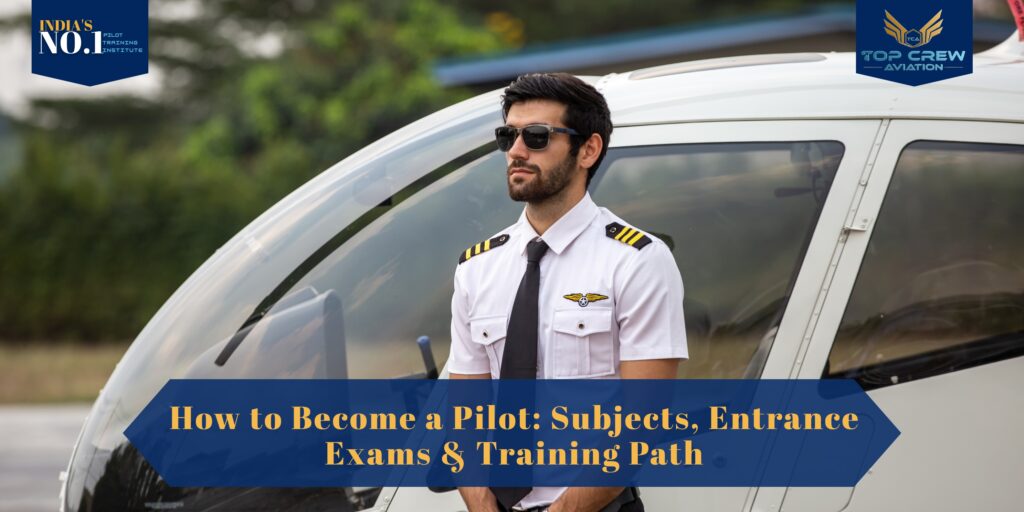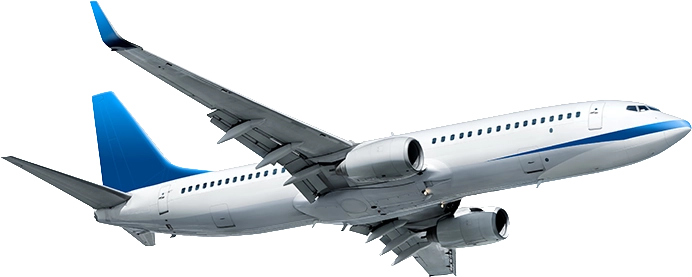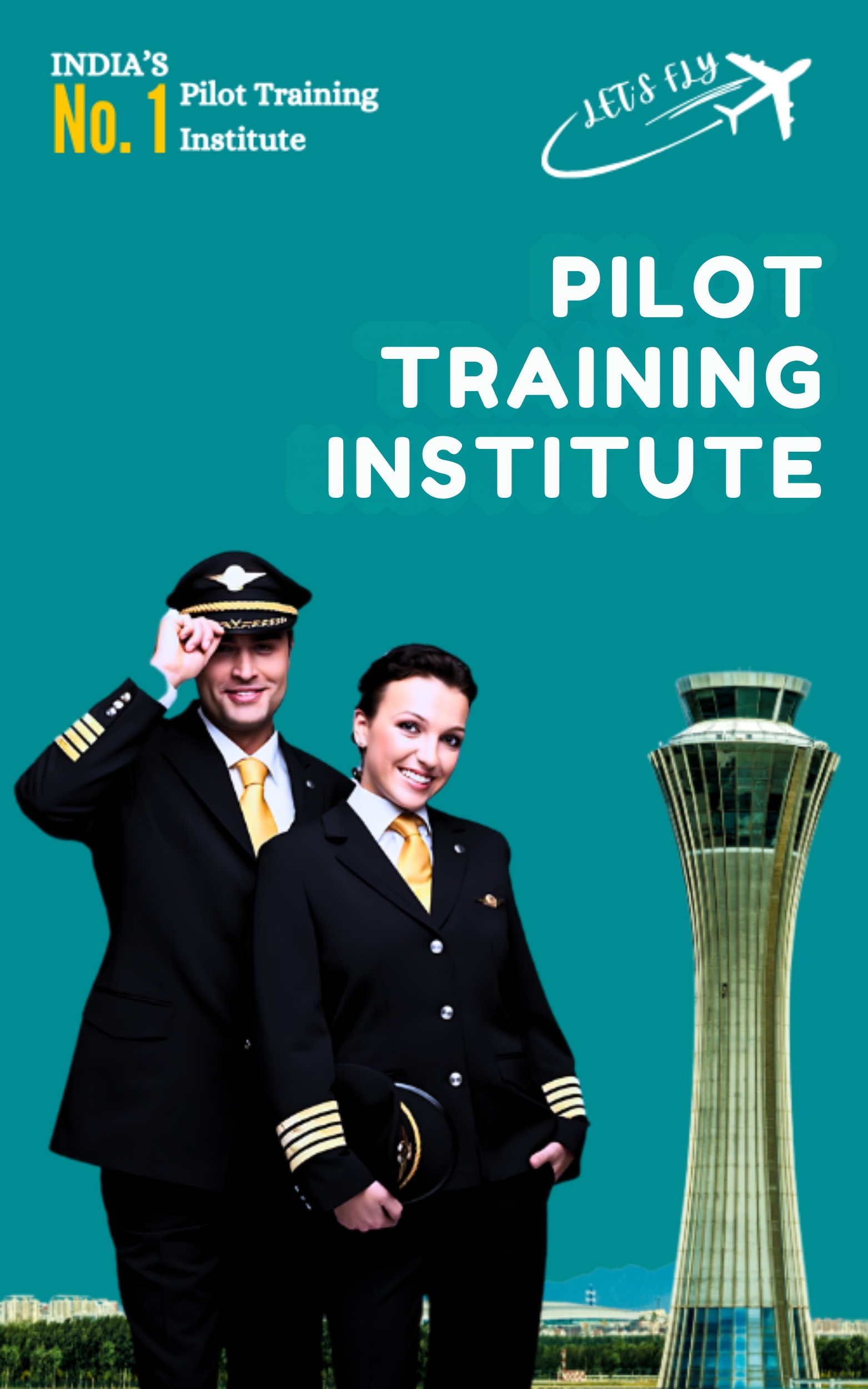How to Become a Pilot: Subjects, Entrance Exams & Training Path
In this modern world, every student wants the best career, which gives them a standard of living, travel opportunities, the highest salary package, medical and health benefits, and flexible working hours. All these facilities are provided in the field of aviator (A broader, more formal term for someone who operates aircraft). It offers the excitement of flying, respect in society, and the chance to travel around the world.
Pilots have a big responsibility—they must fly aircraft safely, which means they need strong flying skills and knowledge in subjects like weather, navigation, and aviation rules; because of how important this job is, proper education and training are very important. From choosing the right subjects in school to passing medical tests and exams, every step needs careful planning and effort.
Educational Background: What to Study in School
If you choose a pilot career, your journey begins with the proper academic foundation starting in school. After completing Class 10, students should opt for the science stream in higher secondary education. This choice is crucial because core subjects related to aviation are science-based. The three most important subjects to focus on are Physics, Mathematics, and English.
- Physics helps you understand the principles of flight, aerodynamics, and navigation.
- Mathematics is essential for calculations related to speed, distance, fuel, and altitude.
- English is equally important as it is the global standard language for aviation communication.
After completing Class 12, students must meet specific eligibility criteria to pursue pilot training. The Directorate General of Civil Aviation (DGCA) in India mandates that candidates must have passed 10+2 with Physics and Mathematics from a recognized board. English should also be a compulsory subject, as proficiency in English is necessary for both theoretical training and radiotelephony communication with air traffic control.
Most flying schools require a minimum of 50% to 60% marks in Physics and Mathematics to
qualify for admission. However, higher marks may be preferred by top institutions and during competitive airline selection.
Students from non-science backgrounds who later decide to become pilots can still be eligible by appearing for Physics and Mathematics through open schooling programs such as the National Institute of Open Schooling (NIOS). Building a strong academic base early on not only fulfils eligibility requirements but also prepares students to excel in entrance exams and flight training programs.
Entrance Exams and Requirements
To become a licensed pilot, aspiring candidates must fulfil specific medical, academic, and regulatory requirements. In India, the process typically begins with passing two mandatory medical tests conducted by DGCA-approved doctors:
- Class 2 Medical: Required to start pilot training.
- Class 1 Medical: Mandatory before obtaining the Commercial Pilot License (CPL).
These medical examinations assess overall health, eyesight, hearing, and physical fitness to ensure you are medically fit to fly.
Once medically cleared, candidates must apply for a DGCA Computer Number, a unique ID required to appear for DGCA theory exams. The application process involves submitting academic certificates, ID proof, and photographs online through the DGCA portal.
With the Computer Number, candidates can register for written exams in subjects such as Air Navigation, Aviation Meteorology, Air Regulations, and the Restricted Radio Telephony (RTR) exam conducted by the Wireless Planning Commission (WPC). Passing these exams is essential to demonstrate your theoretical knowledge of flight operations and communication skills.
Types of Pilot Training Programs
Commercial Pilot License (CPL):-
The Commercial Pilot License (CPL) is the most sought-after license for those who want to become professional pilots and fly for airlines. To be eligible, candidates must:
- Be at least 18 years old.
- Have passed Class 12 (10+2) with Physics and Mathematics
- Hold a valid Class 1 medical certificate.
The training duration typically ranges from 18 to 24 months, depending on the flying school and weather conditions. Students must log a minimum of 200 flying hours, which include dual flights, solo flying, and cross-country flights.
The DGCA syllabus includes subjects such as Air Navigation, Aviation Meteorology, Air Regulations, Aircraft Technical General, and Restricted Radio Telephony (RTR). In addition to practical flying, candidates undergo simulator training and are expected to complete solo flying hours to develop confidence and competence.
Airline Transport Pilot License (ATPL):-
The Airline Transport Pilot License (ATPL) is the highest level of pilot certification and is required to become a Captain in commercial airlines. Candidates pursue the ATPL after obtaining a CPL and completing at least 1,500 hours of flying experience.
Candidates must clear additional theoretical exams and demonstrate advanced flying skills and decision-making ability. Airlines often require an ATPL (or a frozen ATPL) as a basic entry-level qualification for commanding aircraft.
Private Pilot License (PPL):-
The Private Pilot License (PPL) is ideal for those who wish to fly for personal enjoyment or as a hobby. It covers the basics of aviation, and holders are only allowed to fly non-commercially.
The PPL requires around 40 to 60 hours of flying and does not authorize paid or professional flying. It’s often used as a stepping stone toward obtaining a CPL.
Key Subjects in Pilot Training
Pilot training involves the foundation of aviation knowledge, both theoretical knowledge and practical flying skills. To become a competent and licensed pilot, students must study several core subjects that form.
- Air Navigation
This subject teaches pilots how to plan and follow a flight path accurately. It covers the use of maps, compasses, GPS, time-speed-distance calculations, and understanding airspace structure. Accurate navigation is essential for safe and efficient flying, especially in poor weather or unfamiliar routes.
- Aviation Meteorology
Pilots must understand weather conditions and how they affect flight. This subject includes the study of wind patterns, cloud formation, turbulence, thunderstorms, and reading METARs (aviation weather reports). It helps pilots anticipate and respond to weather changes during flight.
- Aircraft Technical General
This subject provides an overview of how an aircraft functions. Topics include flight instruments, fuel systems, electrical systems, hydraulics, and general aircraft construction. Understanding these areas is crucial for mechanical operation knowledge and troubleshooting fundamental issues during flight.
- Air Regulations
Pilots must be fully aware of aviation laws and safety protocols. This subject covers international and local regulations, flight rules, Air Traffic Control (ATC) procedures, and pilot responsibilities. It ensures that pilots operate legally and safely in controlled airspace.
- Flight Radio Telephony (RTR-A)
Effective communication with Air Traffic Control (ATC) is vital for flight safety. This subject trains pilots in standard radio phrases, emergency communication, and real-time coordination using aviation English. Passing the RTR-A exam is a licensing requirement.
- Human Performance & Limitations
This area focuses on how the human body and mind respond during flight. Topics include fatigue, vision, stress, decision-making, and cockpit ergonomics. It helps pilots manage personal limitations and fly safely.
- Airframe & Engine
For technical awareness, pilots study airframe structures and engine types. This includes piston engines, turbines, maintenance basics, and system operations. This knowledge is essential for identifying mechanical issues and understanding aircraft performance.
Additional Skills and Certifications
In addition to academic knowledge and flying hours, aspiring pilots must develop essential skills and obtain certifications that enhance their safety, communication, and operational efficiency. These additional qualifications are often required by flying schools and airlines and play a crucial role in preparing candidates for real-world aviation environments.



